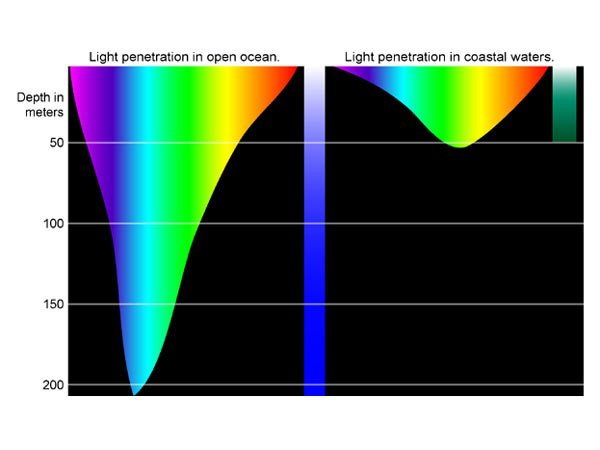Why the Visible Spectrum in Life Forms is Limited
The following is an image from the NOAA, obtained from this answer: Answer by Corvi Zeman to "How come we can only see a tiny bit of the electromagnetic spectrum?" | Quora

The human eye's tristimulus response curve has a similar range, with frequencies corresponding to blue and yellow light having low responses, while green has a peak. Now, colours in human eyes are not fundamental, but rather due to the stimulation of red, green and blue cells of the same frequency, which is what tri-stimulus is. But, we can represent that frequency as the combination of RGB values using the RGB Colour Model, which replicates exactly what our eyes do! (In other words, it is not that our eyes see red, green and blue; rather, we see the plain frequencies as red, green and blue.)
So the thing is, our eyes have "vitreous humor", which is a fluid that keeps the retina in shape. So this flow of light through the fluid filters it in a similar fashion to how water does, and thus we have similar response curves.
Some animals can see ultraviolet frequencies, but their eyes have a crystalline structure, which allows a different range of frequencies to pass compared to human eyes.
So perhaps, our eyes can sense more frequency ranges, but the materials prevent the light from reaching the sensors. UV and IR can propagate through the air, but not through water. That's interesting. Also interesting is how we can know for certain then that aquatic animals do not have a wider range of visual fidelity as compared to humans.